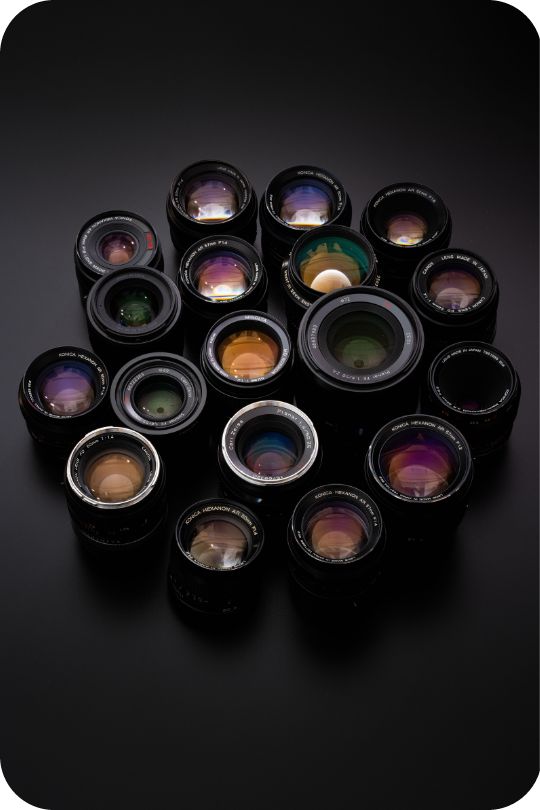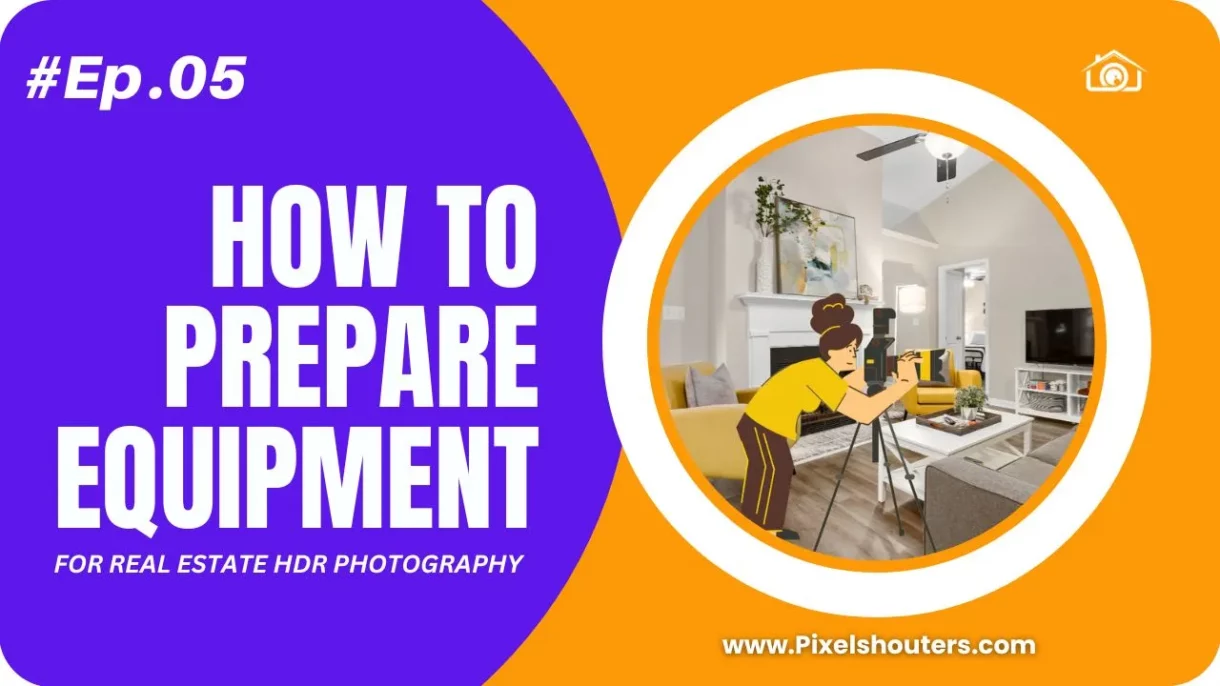Real Estate HDR Photography EP 05: How to Prepare Photography Equipment.
Welcome to Episode 5 of our Real estate HDR photography series! In this episode, we’ll be discussing how to prepare HDR photography equipment for real estate. To get started, you’ll need a camera capable of capturing multiple exposures, a tripod, and a remote shutter release. Accessories like a polarizing filter and wide-angle lens can also enhance your shots. When shooting HDR, remember to set up your camera for bracketing mode, adjust your exposure settings, and consider composition and lighting. With these tips, you’ll be well on your way to capturing stunning real estate photos.
Table of Contents
Cameras (DSLR vs Mirrorless)
Explanation of DSLR Cameras
DSLR (Digital Single-Lens Reflex) cameras are a popular choice for Real Estate HDR Photography Equipment. These cameras have a mirror that reflects the light coming through the lens to an optical viewfinder. When the shutter button is pressed, the mirror flips up, and the image is captured by the camera’s image sensor.
Explanation of Mirrorless Cameras
Mirrorless of cameras, as the name suggests, do not have a mirror. Instead, they use an electronic viewfinder or the camera’s LCD screen to display the image. When the shutter button is pressed, the camera’s image sensor captures the image directly.
Comparison between the two
Both DSLR cameras and Mirrorless cameras have their advantages and disadvantages. DSLR cameras are generally more durable, have better battery life, and have a wider selection of lenses. On the other hand, Mirrorless cameras are smaller, lighter, and have faster autofocus. Both are perfect for HDR Photography.

Lens
Wide-angle lens
Wide-angle lenses are a popular choice for Real Estate HDR Photography Equipment as they allow photographers to capture more of the room in a single shot. These lenses have a focal length of 10-24mm and are ideal for photographing small rooms or spaces where it is challenging to capture the entire space in one shot.
Fisheye lens
Fisheye lenses are another option for Real Estate HDR Photography Equipment. These lenses have a focal length of around 8-15mm, and they provide a unique perspective that can make a room look larger than it is. However, they can also create distorted images that may not accurately represent the space.
Tilt-shift lens
Tilt-shift lenses are a specialized type of lens that allows photographers to adjust the perspective of the image. These lenses can correct perspective distortion and create a more natural-looking image. They are particularly useful for photographing buildings or architectural features.

Tripods
A. Explanation of Tripods
A tripod is a three-legged stand that photographers use to stabilize their cameras. With Tripods are essential for Real Estate HDR Photography Equipment as they help ensure that the images are sharp and free of motion blur.
B. Benefits of using Tripods
Using a tripod has several benefits, including:
- Stability: A tripod provides a stable base for the camera, which helps prevent camera shake and produces sharper images.
- Consistency: A tripod allows photographers to keep the camera in the same position throughout a series of shots, making it easier to blend images together in post-processing.
- Flexibility: A tripod allows photographers to adjust the camera’s height and angle, providing more flexibility in composition.
C. Types of Tripods
There are several types of tripods available for HDR photography Equipment, including:
- Aluminum: These tripods are sturdy and durable but can be heavy to carry around.
- Carbon fiber: Carbon fiber tripods are lighter than aluminum and provide excellent stability.
- Mini: Mini tripods are small and compact, making them ideal for travel or shooting in tight spaces.

Lighting
A. Natural Light
Natural light refers to the light that comes from the sun or natural sources. In Real Estate HDR Photography Equipment, natural light can create a soft, even light that can make a property look more inviting.
Advantages of Natural Light
Using natural light has several advantages, including:
- It is free: Natural light does not require any additional equipment or cost, making it a cost-effective option for Real Estate HDR Photography Equipment.
- It is versatile: Natural light can be used to create a variety of different moods and effects, depending on the time of day and weather conditions.
- It is natural: Natural light can make a property look more inviting and comfortable, which can help potential buyers envision themselves living there.
Tips for using Natural Light
When using natural light, it is essential to:
- Plan ahead: Photographers should consider the time of day and the direction of the light when shooting.
- Use reflectors: Reflectors can help bounce light into darker areas of the room and create more even lighting.
- Avoid harsh shadows: Photographers should avoid shooting during midday when the sun is overhead, as this can create harsh shadows and unflattering lighting.
B. Artificial Light
Artificial light refers to any light source that is not natural. In Real Estate HDR Photography Equipment, artificial light can be used to create a specific mood or effect and ensure that the images are well-lit.
Advantages of Artificial Light
Using artificial light has several advantages, including:
- Consistency: Artificial light provides a consistent light source that can be controlled and adjusted as needed.
- Control: Photographers can use artificial light to create specific moods and effects, such as warm, cozy lighting or bright, airy lighting.
- Versatility: Artificial light can be used to create a variety of different lighting setups, from simple one-light setups to more complex lighting setups.
Tips for using Artificial Light
When using artificial light, it is essential to:
- Use the right type of light: Photographers should choose the right type of light, such as LED or strobe, depending on the type of the shot, they are trying to create and the size of the space they are shooting in.
- Position the lights correctly: Photographers should position the lights in a way that creates even lighting and minimizes shadows and hotspots.
- Avoid over-lighting: Photographers should be careful not to over-light a space, as this can create an artificial and uninviting look.
C. Combination of Natural and Artificial Light
Combination lighting refers to using both natural and artificial light in Real Estate HDR Photography Equipment. This approach allows photographers to take advantage of the benefits of both types of lighting and create a balanced and visually appealing image.

Advantages of Combination Lighting
Using a combination of natural and artificial light has several advantages for HDR photography equipment, including:
- Balance: Combination lighting allows photographers to balance the strengths and weaknesses of both natural and artificial light and create a more visually appealing image.
- Control: Photographers have more control over the lighting setup and can adjust the balance of natural and artificial light to create the desired effect.
- Versatility: Combination lighting provides photographers with more versatility in terms of the type of shot they can create.
Tips for using Combination Lighting
When using combination lighting, it is essential to:
- Experiment: Photographers should experiment with different combinations of natural and artificial light to find the right balance for each shot.
- Consider the time of day: Photographers should consider the time of day when shooting and adjust the artificial lighting accordingly to create a more natural look.
- Be consistent: Photographers should strive for consistency in the lighting setup throughout a series of shots to ensure that they blend well together in post-processing.
Conclusion
Real estate HDR photography equipment requires specialized equipment to produce high-quality, visually appealing images that accurately represent a property. A wide-angle lens, tripod, and a combination of natural and artificial light are essential components of any real estate HDR photography equipment setup. Post-processing is also a critical step in creating an HDR image that accurately represents the property. With the right equipment, photographers can create images that showcase a property’s unique features and attract potential buyers.

[…] this series, we’ve covered a variety of topics, from the basics of HDR photography and equipment needed, to composition techniques and editing […]